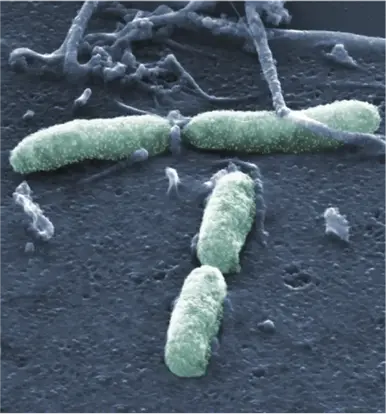Helen Wang research group

Scanning electron microscopy image of Y. pseudotuberculosis attached to HeLa cell
Molecular mechanisms of bacterial plasmid copy number control
Pathogenic bacteria have evolved numerous virulence mechanisms that are essential for establishing infections. There are three pathogenic Yersinia strains that can cause disease in humans; Y. enterocolitica, Y. pseudotuberculosis and Y. pestis (the causative agent of Plague). All three human pathogenic Yersinia share a common 70-kb IncFII virulence plasmid that encodes a set of bacterial toxins, called Yersinia outer proteins (Yops). Secretion and translocation of Yops are dependent on the Type III Secretion System (T3SS), and this secretion system is also encoded on the virulence plasmid.
Recently, we reported a novel strategy of Y. pseudotuberculosis whereby this human pathogen up-regulates the copy number of its virulence plasmid during infection. The goal of our research is to elucidate the molecular mechanisms regulating virulence plasmid copy number control in pathogenic bacteria. Our main approaches include both in vitro and in vivo methods to explore the host-pathogen interaction using human pathogenic Y. pseudotuberculosis. Using T3SS as a plasmid encoded function, we will also investigate the regulatory interplay between the T3SS and IncFII plasmid replication at the molecular level.
